Blog
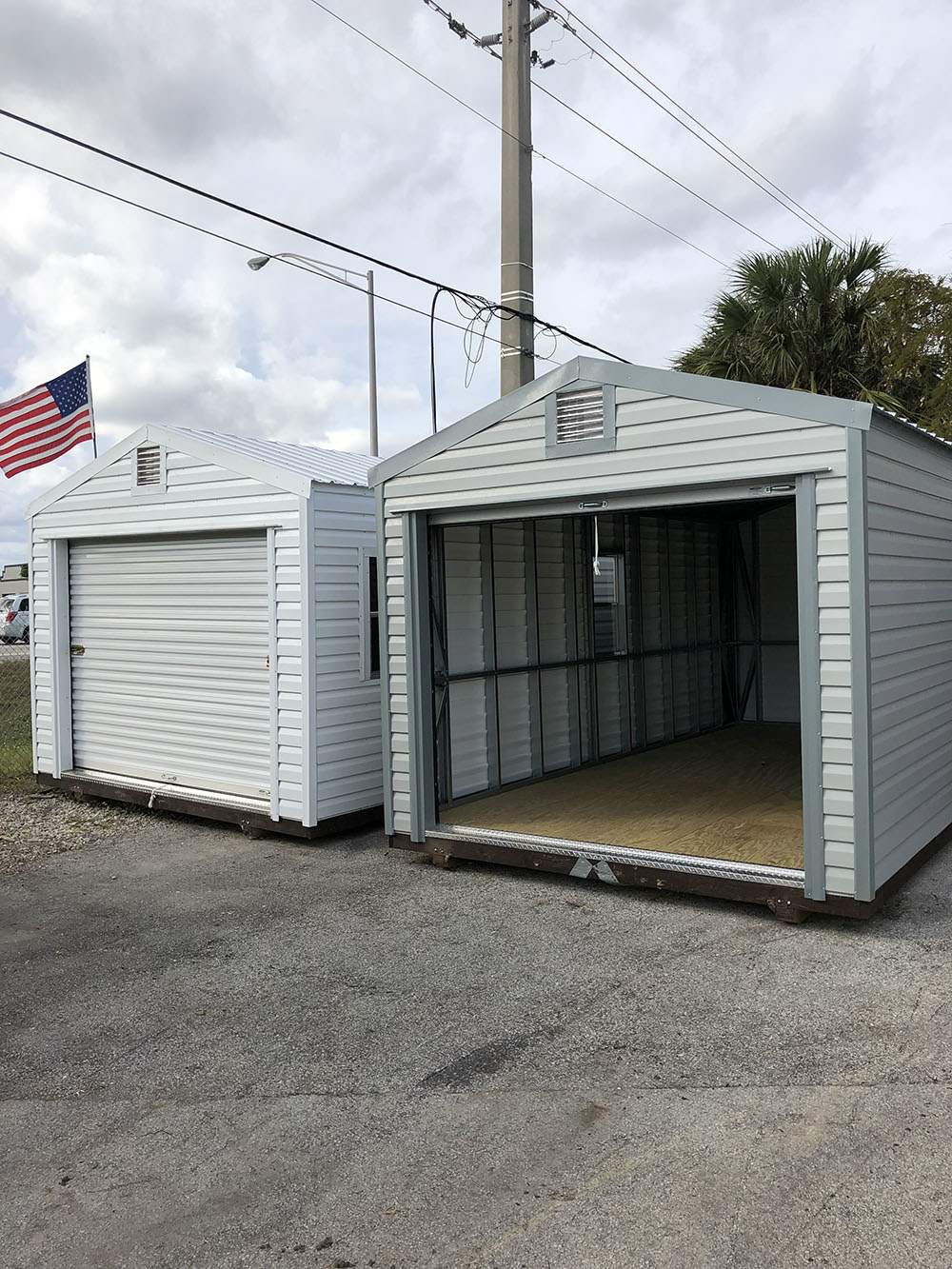
Why is Franks Sheds the Best Shed Provider in South Florida
Why Frank’s Sheds is the Best Shed Provider in South Florida
When it comes to finding the perfect storage solution in South Florida, look no further than Frank’s Sheds. With over a decade of experience serving the Hollywood, Davie, Fort Lauderdale, and surrounding communities, Frank’s Sheds has established itself as the go-to provider for all your shed needs. From residential to commercial, agricultural to aviation, and marine storage, Frank’s Sheds offers a diverse range of high-quality sheds and specializes in Accu-Steel frame buildings. In this blog post, we will explore the reasons why Frank’s Sheds stands out from the competition and why they are the best shed provider in South Florida.
- Unmatched Experience and Expertise
With more than 10 years of experience, Frank’s Sheds has honed its expertise in the shed industry. Our family-run business understands the unique requirements and challenges faced by South Florida residents, ensuring that we deliver tailored solutions that meet your specific needs. Whether you’re looking for a shed for personal use or a large-scale storage solution for commercial purposes, our knowledgeable team will guide you through the process, providing expert advice and recommendations.
- Extensive Selection of Sheds
One of the key reasons why Frank’s Sheds stands out is our extensive selection of sheds. We offer a wide variety of styles, sizes, and designs to cater to different preferences and storage requirements. From compact garden sheds to spacious barn-style buildings, Frank’s Sheds has the perfect option for every customer. Additionally, our specialization in Accu-Steel frame buildings ensures that you receive a durable, long-lasting shed that can withstand the unpredictable weather conditions in South Florida.
- Customization Options
At Frank’s Sheds, we understand that each customer has unique needs and preferences. That’s why we offer customization options, allowing you to create a shed that perfectly suits your requirements. Whether you need additional doors, windows, or specific shelving arrangements, our team will work closely with you to bring your vision to life. Our personalized approach sets Frank’s Sheds apart from competitors and ensures that you get a shed that not only meets your storage needs but also complements your property.
- Quality Materials and Construction
When investing in a shed, durability and quality are of utmost importance. Frank’s Sheds uses only the finest materials in their construction process, ensuring that each shed is built to last. Our Accu-Steel frame buildings are engineered with precision, offering superior strength and resistance to the elements. Additionally, Frank’s Sheds follows rigorous construction standards, paying attention to every detail to deliver a product that exceeds customer expectations.
- Exceptional Customer Service
Frank’s Sheds prides itself on providing exceptional customer service throughout the entire shed-buying process. From the initial consultation to the final installation, our friendly and knowledgeable staff is committed to delivering a smooth and hassle-free experience. We take the time to understand your needs, answer any questions you may have, and guide you in making informed decisions. Frank’s Sheds values customer satisfaction above all else and strives to build long-lasting relationships with their clients.
- Affordable Pricing and Financing Options
While quality and craftsmanship are essential, affordability is also a key consideration when purchasing a shed. Frank’s Sheds understands this and offers competitive pricing without compromising on the quality of their products. We believe that everyone should have access to reliable and durable storage solutions. Additionally, we provide flexible financing options to make shed ownership more accessible to their customers.
Conclusion
When it comes to finding the best shed provider in South Florida, Frank’s Sheds undoubtedly stands out from the competition. With our unmatched experience, extensive selection of sheds, customization options, quality materials and construction, exceptional customer service, and affordable pricing, Frank’s Sheds has built a reputation as the go-to shed provider in the region. Whether you need a shed for residential, commercial, agricultural, aviation, or marine storage, you can trust Frank’s Sheds to deliver a superior product that meets your needs and exceeds your expectations. Contact Frank’s Sheds today and experience the difference for yourself!
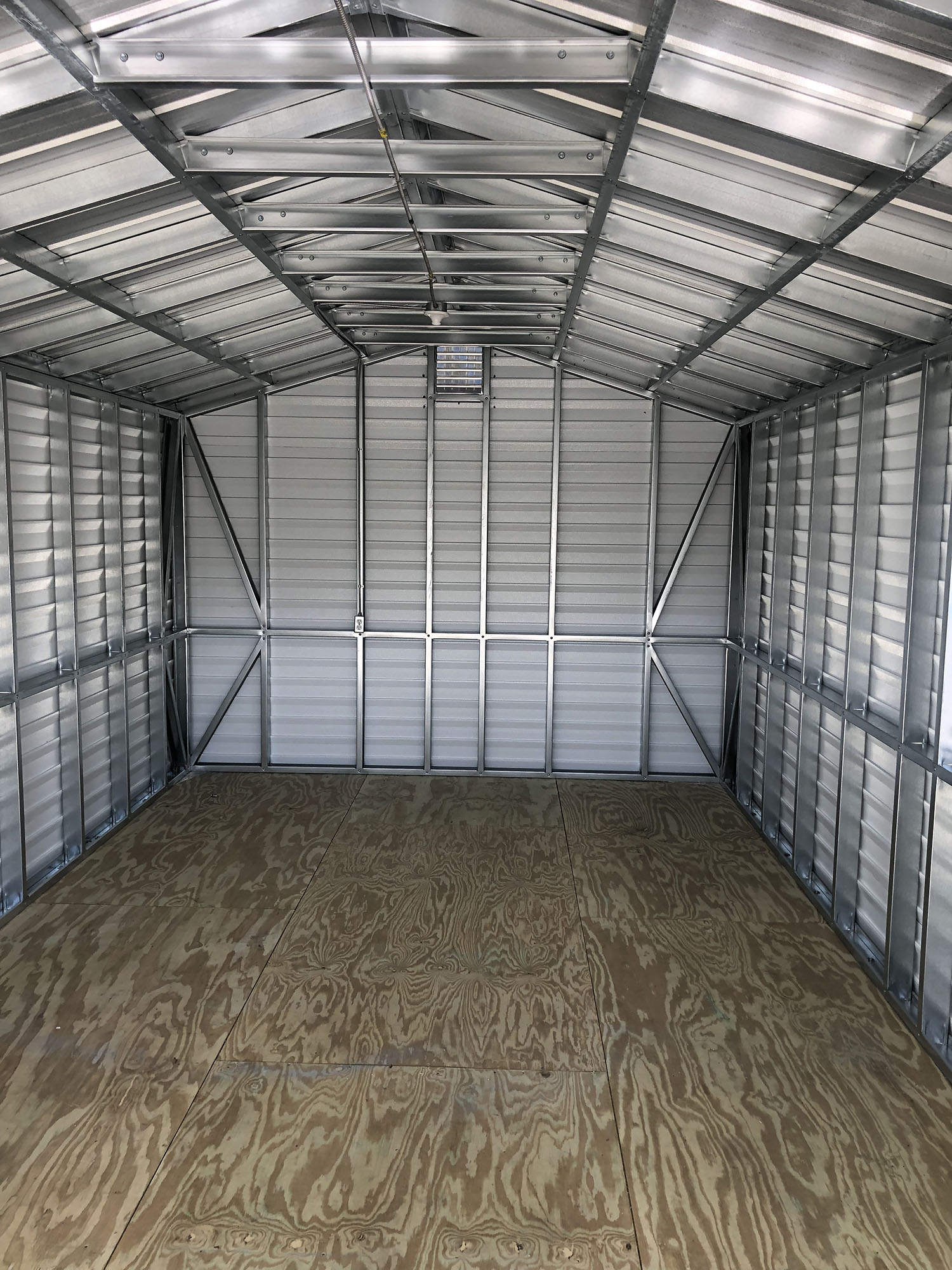
Why are steel frame sheds the best
Steel Frame Sheds: The Ultimate Solution for Secure and Versatile Storage
Introduction:
When it comes to storage and outdoor sheds, choosing the right material is crucial for durability, versatility, and security. Among the available options, steel frame sheds have emerged as the best choice for residential, commercial, agricultural, aviation, and marine storage needs. At Frank’s Sheds, a trusted family-run business serving the South Florida community for over a decade, we specialize in Accu-Steel frame buildings. In this blog, we will delve deeper into the reasons why steel frame sheds are considered the ultimate solution for all your storage requirements.
- Unmatched Durability and Strength:
Steel frame sheds boast unparalleled durability and strength compared to other shed materials. Steel is a robust material that can withstand the test of time and the harshest weather conditions, making it ideal for long-term use. Unlike sheds made from wood or other materials, steel frame sheds do not rot, warp, or crack. They are also highly resistant to pests, such as termites, and can endure heavy loads without compromising their structural integrity. Investing in a steel frame shed ensures a reliable and long-lasting storage solution.
- Remarkable Versatility:
Steel frame sheds offer remarkable versatility in terms of design and functionality. With customizable options, you can tailor your shed to meet your specific requirements. Whether you need a small storage shed for your backyard or a large-scale commercial facility, steel frame sheds can be designed to accommodate your needs perfectly. They can be easily expanded, modified, or relocated, providing a flexible solution for any future adjustments you may require.
- Minimal Maintenance:
Maintaining a shed should be hassle-free, and steel frame sheds excel in this regard. Unlike wood sheds that demand regular painting, staining, and sealing, steel frame sheds require minimal maintenance. Steel is naturally resistant to moisture, pests, and decay, eliminating the need for constant upkeep. A simple wash with water and mild detergent is usually sufficient to keep your steel shed looking clean and fresh. This convenience saves you time, effort, and money in the long run.
- Superior Fire Resistance:
Fire safety is a significant concern, especially when it comes to storage facilities. Steel frame sheds provide an added layer of protection as steel is inherently fire-resistant. Unlike wooden sheds that can fuel a fire, steel frame sheds do not contribute to its spread. This feature ensures the safety of your stored belongings and gives you peace of mind, especially if you are storing valuable or flammable items. Opting for a steel frame shed significantly reduces the risk of fire-related damage.
- Energy Efficiency and Climate Control:
Steel frame sheds are renowned for their energy efficiency, which is crucial in today’s world. These sheds can be effectively insulated, allowing you to maintain a comfortable temperature inside. By reducing heat transfer, steel frame sheds help regulate the internal climate, keeping your stored items protected from extreme temperatures. This energy efficiency not only ensures the well-being of your belongings but can also lead to cost savings in terms of reduced heating or cooling requirements.
- Environmentally Responsible Choice:
Choosing steel frame sheds demonstrates your commitment to the environment. Steel is a recyclable material, and using it for construction reduces the demand for new resources. By opting for steel sheds, you contribute to sustainable practices and minimize the carbon footprint. Additionally, steel frame sheds can be dismantled and relocated, reducing waste and extending their lifespan. This eco-friendly aspect aligns with responsible consumption and environmental stewardship.
- Enhanced Security Features:
Security is a top priority when it comes to storage facilities, and steel frame sheds provide excellent security features. The robustness of steel makes it difficult to breach, acting as a deterrent to potential thieves. Moreover, you can enhance security by incorporating features such as secure locks, alarms, and surveillance systems into your steel shed. This comprehensive approach ensures the utmost safety and protection of your valuable belongings.
Conclusion:
When it comes to storage solutions, steel frame sheds surpass all other options in terms of durability, versatility, low maintenance, fire resistance, energy efficiency, environmental friendliness, and enhanced security. At Frank’s Sheds, we understand the importance of providing high-quality storage solutions to our community, which is why we specialize in Accu-Steel frame buildings. Invest in a steel frame shed today and enjoy the peace of mind that comes with a reliable, long-lasting, and customizable storage solution for your residential, commercial, agricultural, aviation, or marine needs. Make the smart choice with steel frame sheds and experience the ultimate in secure and versatile storage solutions.
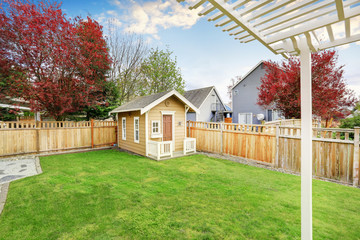
What are good uses for a shed in South Florida
Maximizing the Magic of Sheds in South Florida: Incredible Uses for Storing Garden Supplies, Creating a Gym, Office, Man Cave, and Extra Storage
In the sun-soaked paradise of South Florida, where outdoor living takes center stage, a shed is more than just a structure—it’s a gateway to endless possibilities. With over a decade of serving the South Florida community, Frank’s Sheds has become synonymous with durable and reliable Accu-Steel frame buildings. Today, we’ll explore the remarkable uses for sheds in South Florida, from storing garden supplies to crafting a fantastic gym, office, man cave, or extra storage space.
- Storing Garden Supplies: A Gardener’s Oasis
South Florida’s vibrant climate creates a haven for gardening enthusiasts. Transform your shed into a gardener’s oasis, where all your tools, equipment, pots, and supplies find a tidy and secure home. With organized shelving, hanging racks, and labeled containers, your garden supplies will be easily accessible, allowing you to cultivate a stunning garden with ease.
- Gym: A Personal Fitness Retreat
Prioritizing health and fitness is essential, and a shed can be the perfect space for your personal fitness retreat. Equip your shed with exercise machines, weights, yoga mats, and mirrors, creating a dedicated workout area just step away from your doorstep. Enjoy the privacy and convenience of a shed gym, motivating you to achieve your fitness goals and elevate your well-being.
- Office: A Haven of Productivity
With remote work becoming increasingly common, having a dedicated office space at home is invaluable. Convert your shed into a serene workspace, separate from the distractions of daily life. Furnish it with a desk, comfortable chair, shelves for storage, and ample natural light, allowing you to focus on your work in a tranquil environment.
- Man Cave: A Personal Retreat
Sometimes, we all need a space to call our own—a personal retreat where hobbies and leisure take center stage. Transform your shed into the ultimate man cave, tailored to your interests and passions. Whether it becomes a home theater, gaming den, sports haven, or workshop for creative projects, your man cave will be a place where you can unwind, indulge, and embrace your individuality.
- Extra Storage: A Clutter-Free Solution
Living in South Florida often means having an abundance of outdoor equipment, water toys, and seasonal items that require proper storage. Embrace the solution of extra storage in your shed, keeping your patio, garage, or home free from clutter. Bicycles, lawn mowers, kayaks, and holiday decorations can find their designated spots in a well-organized shed, allowing you to fully enjoy your living spaces.
Conclusion:
For over a decade, Frank’s Sheds has been a trusted provider of storage solutions to the South Florida community. Yet, our sheds offer so much more than simple storage—they unlock a world of boundless potential. Whether you need a peaceful sanctuary for your gardening supplies, a personal fitness retreat, a productive office space, a captivating man cave, or additional storage, a shed can cater to your unique needs and aspirations.
Let Frank’s Sheds guide you in realizing the true versatility and beauty of your shed. Our expertise in creating Accu-Steel frame buildings ensures durability and aesthetic appeal. Join us in transforming your South Florida backyard into a haven of inspiration, organization, and joy.
Discover the magic that lies within your shed. Choose Frank’s Sheds as your partner, and let the enchantment unfold. The opportunities are limitless, and the time to embrace them is now.
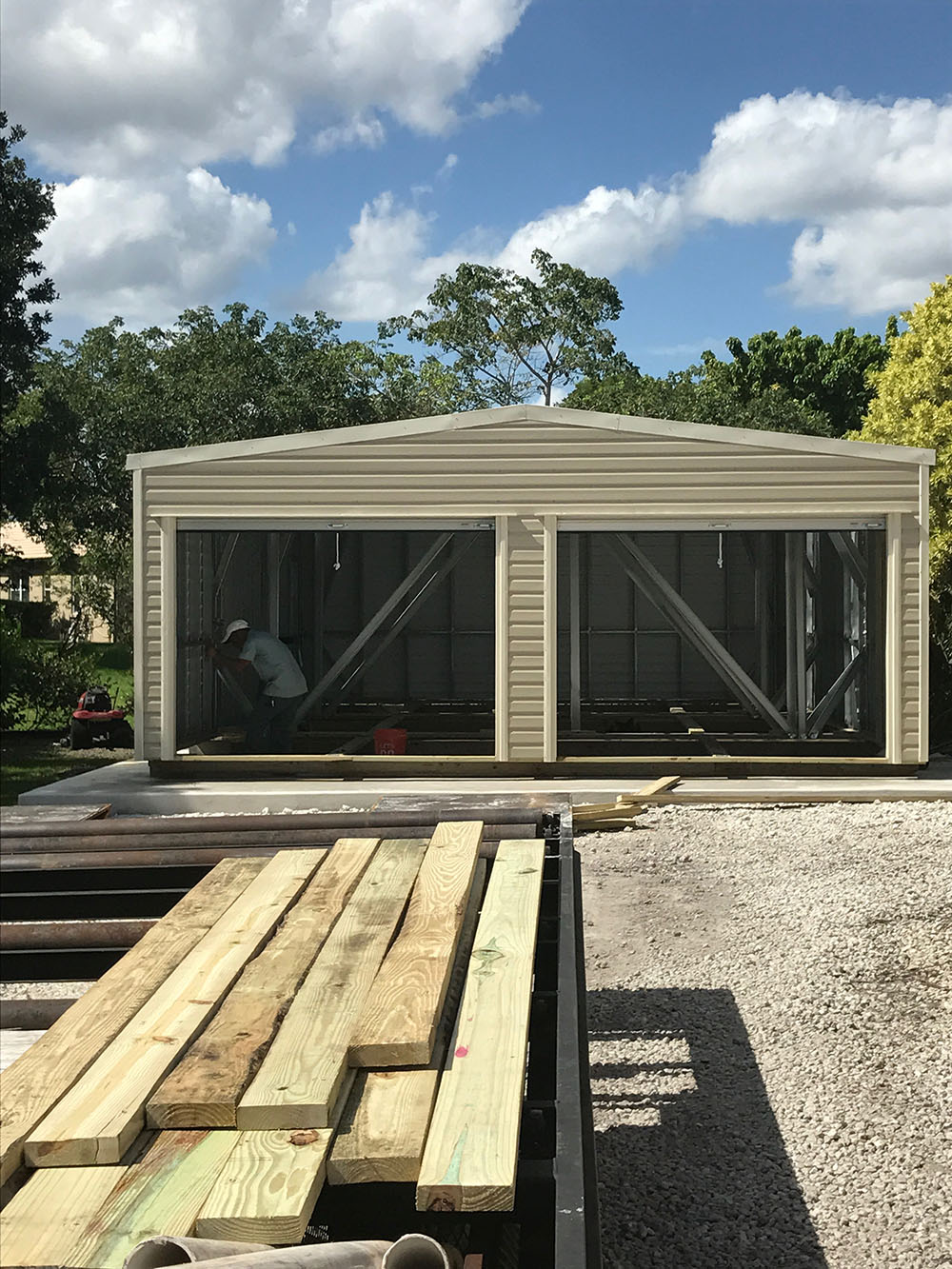
How to Make Your Shed Last with Yearly Maintenance
In order to maintain the quality and investment that’s been spent on your storage shed, it’s important to spend some extra time on the upkeep. With that being said, here at Franks Sheds, we have the expertise to maintain your storage shed this year.
Check the shed for any weather damage
When you live in Fort Lauderdale Florida, it’s important to protect your shed from all of the weather damage that can come during the rainy months. With that in mind, pay particular attention to your shed after a bad storm to ensure there’s no weather damage that’s been caused. If it has, fix it immediately to prevent further damage.
Clean out shed gutters if necessary
Just like gutters on the home, they can cause structural damage to the property if not seen to. If they become full of debris, clear them out so that they don’t collect water and cause damage.
Reseal any extremities such as the windows and doors
Any windows and doors should be checked occasionally to ensure the seals on them are still intact. If these windows and doors aren’t sealed properly, it not only causes damage from water getting into the shed but also fails to keep it insulated.
Keep everything organized
When it comes to the interiors of your shed, keeping it organized is important. It’s why having shelving units and other storage options should be a must for anyone that is lacking it.
Take a look at what is lying around on the floor of the shed and get suitable storage for these items. It’ll certainly help free up space for easier movement.
Clear the surroundings of debris
The exterior surroundings of the shed should also be considered as something to focus on. Debris collecting around the outside of the shed can lead to pests if it’s not cleared properly. With that in mind, be sure to clear up any debris that could be inviting for pests like mice and other wildlife.
We’d recommend sweeping up any leaves and hefty debris lying about so that the space is kept clear. It ensures there’s nothing around the area that’s going to create an enticing warmth for pests to burrow and create a home in.
Repaint the surfaces every two to five years
With a shed, it’s exposed to the elements, just like the exterior of your home is. That means that the paint on these surfaces is much more prone to wear and tear over the years. While you can get some great exterior paint, not all of them are going to last forever.
It’s worth repainting the surfaces of your shed every two to five years. This will help with appearances and keeping it well-kept.
Replace your shed with Franks Sheds, Fort Lauderdale Florida
At Franks Sheds, you can replace any old and withered shed with a brand-new one. If you’re in the market for a new outdoor shed, be sure to get in touch today.
We also have a Facebook page worth checking out to see all of our wonderful shed options available.

Factors in New Shed Placement
There are many important factors to consider when placing a new shed on your property. However, it’s not as simple as just finding a spot and putting it down! Discussing some of the most important factors to consider when choosing a location for your new shed is important, and by following these tips, you can be sure that your new shed will be placed in the best possible location for your needs!
Important factor to consider when placing a new shed is the sun
You’ll want to make sure that your shed gets plenty of sunlight so that it can stay warm in the winter and cool in the summer. If you live in an area with a lot of trees, you may need to clear some space to ensure that your shed gets enough sunlight.
In addition to considering the sun, you’ll also want to think about wind. You’ll want to place your shed in an area where strong winds won’t blow over it. This is especially important if you live in an area with hurricanes or other severe weather!
Another important factor to consider when placing your new shed is the proximity to other buildings on your property
You’ll want to make sure that your shed isn’t too close to your house or other buildings on your property. You don’t want it to be an eyesore, and you also don’t want it to block anything from view. In addition, you’ll want to make sure that your shed has enough space around it so that you can easily get in and out. You don’t want it cramped up against a fence or another structure.
Another important factor to consider is the proximity to utilities
You’ll want to make sure that your shed is close enough to your house or other buildings on your property so that you can easily access water and electricity. This is especially important if you plan on using your shed as a workshop or for storage. It’s crucial to have these amenities close by in case of an emergency.
Another thing to think about is the orientation of your shed. You’ll want to place it so that the door is facing away from any prevailing winds. This will help keep your shed more stable and prevent wind damage.
Local zoning licenses and regulations
Before you finalize the placement of your shed, be sure to check with your local zoning board to see if there are any restrictions or permits that you need to acquire. This is a very important step, as you don’t want to get fined or have to move your shed later on. However, there may be certain regulations that you need to follow in order to stay in compliance with your city or town.
In conclusion, there are many factors to consider when placing a new shed on your property. By taking the time to think about these things in advance, you can be sure that your shed will be placed in the best possible location. New Shed Placement can provide you with the perfect storage solution for your needs.
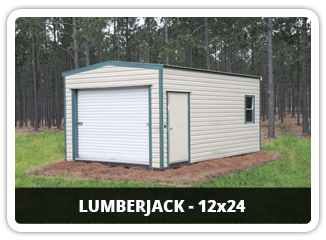
Shed styles: What are the different styles of sheds?
When buying a shed for the first time, it might be challenging, especially if you’re not sure what kind of shed you want or which features would be most useful for you and your needs.
A single sloped roof characterizes a pent shed. On the same side as the door is where the roof’s highest point is situated. There is only one slope there. Even though it is thought of as a more modern option for a shed, pent roofs probably first appeared centuries ago. Pent roofs are also sometimes referred to as flat or mono-pitched roofs. The pent roof often has its greatest point on the front of the timber building before sloping down to the back.
The roof of a reverse pent shed has the same single-sloping design as a pent shed, but it is installed in the other direction. The opposite side of the door is where the reverse pent shed’s roof’s highest point is situated. The Reverse Pent Shed is a highly well-liked garden shed that is offered in a variety of sizes, ranging from 4 feet by 4 feet to 20 feet by 10 feet. We have a reverse pent garden shed that will meet your demands, with a variety of size options, configurations, and accessories (such an electrics package).
Two sloping sides that meet in the middle down the length of the garden shed define an apex shed or apex roof. There are two flat gables on either end of an apex shed (known as the gable ends). They may also be referred to as the building’s front and back. The door is situated on one of the gable ends of an apex shed. If you need extra headroom for work within your garage or are storing higher tools, the extra height of an apex roof can be helpful.
The design of an apex shed is identical to a reverse apex shed. The two sloping sides that meet in the center of a reverse apex shed’s length will slope down toward the shed’s front and back rather than either side (as with a standard apex shed). The two sloping sides that meet in the center of a reverse apex shed’s length will slope down toward the shed’s front and back rather than either side (as with a standard apex shed).
An outdoor structure called a potting shed is used to store outdoor gardening tools and equipment as well as pot plants and vegetables. In contrast to greenhouses, potting sheds are frequently used. Large, slanted windows made of thin glass or plastic are a common characteristic of potting sheds. These windows let light and heat pass through. In addition to promoting plant and vegetable growth, warmer temperatures inside a potting shed will shield them from the cold, frost, and wind.
Positioning potting sheds so they face south will allow for lots of sunlight to stream through. Additionally, because potting sheds provide superior insulation than greenhouses, it is feasible to continue growing plants, fruits, and vegetables even during the winter.
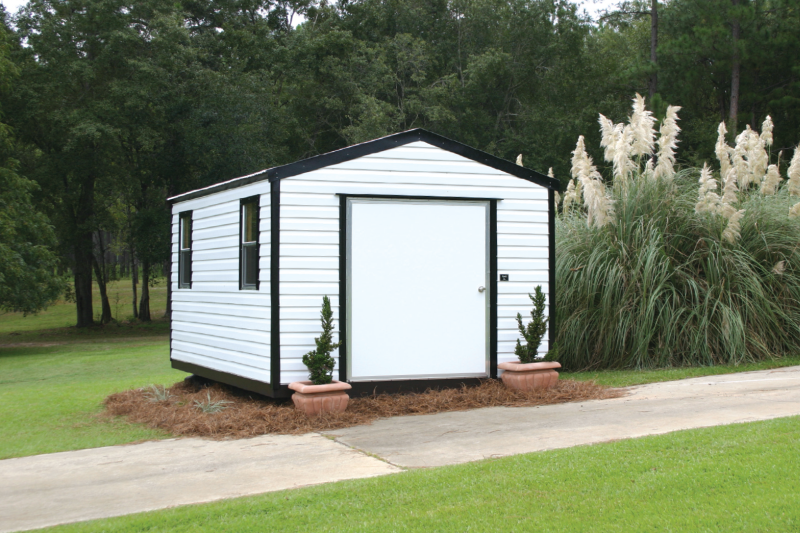
How To Select The Perfect Shed Style: A Comprehensive Guide
When it comes time to choose the right shed style for your needs, there are as many solutions out there as there are homeowners. Unfortunately, the most practical and functional solution is rarely the most attractive or popular one, but often the one that suits your needs the best. Therefore, if you’re just starting the shed planning process, you may be wondering what kind of shed to choose.
In this article, we’ll break down the different styles and their pros and cons in detail, so you can make the right decision for your home and family.
How To Choose The Right Shed Style For You
To choose the right shed style for your needs, keep a few things in mind. First and foremost, you need to decide what kind of lifestyle you live. This will help you narrow your search to specific shed styles and features. After that, it’s a matter of finding the right fit for your particular needs and budget.
The 6 Different Types of Sheds
Here at Frank’s Sheds, you’ll find six different types of sheds. And to be able to choose the right shed style, you’ll have to learn about what’s on offer first.
1. Lapsider Sheds
The Lapsider is the original when it comes to shed design. Its construction is the most durable of all sheds available on the market. That’s why it’s often the ideal solution for your shed needs. No matter what you’re looking to store in there.
Our Lapsider is available in end or side gable. This means you get great flexibility when thinking about window and door placement, making it usable for business or pleasure.
2. The Box Eave
Our Box Eave shed features the same structural design and durability as the Lapsider, with a difference. It has the addition of a boxed overhang to increase its visual attractiveness.
This addition makes the Box Eave shed look like it’s been on your property forever. Not only that, but the overhang provides protection against the elements. Ensuring that your shed will last for many years to come. Like the Lapsider, the Box Eave is available in end or side gable.
3. The Lumberjack
The Lumberjack is ideal for all your storage needs, both residentially and commercially. It features 8-foot high walls giving you space for items that wouldn’t fit in a standard shed.
You can customize the Lumberjack to fit your specific storage needs and tastes. Built for durability, you can add a garage door or box eave to increase its individuality.
4. Playhouse Storage Sheds
If you need a dedicated space for your kids, then Playhouse Storage is your shed. It’s available in various sizes and configurations to fit your home. So not only is it great for the kids, but it makes a great addition to any home, whether you’re looking for a place to store gardening tools or just want somewhere to relax.
5. Hardie Plank/Board Sheds
Compared to other sheds, the Hardie Plank/Board shed can withstand changing climate conditions with a reduced maintenance cycle. You can also choose from various colors, so your shed fits in seamlessly with your home.
6. A Lean Too
Too means you’ll have a shed that is easy to tuck away on the side of your home. Also available in a variety of colors to match the outward appearance of the building it’s going on.
Additional Options
To make any shed fit in seamlessly with your home and lifestyle, you’ll want various additional options to choose from. And with Frank’s Sheds, those options don’t stop at our wide selection of colors to choose from.
Standard Options:
- Windows or vents depending on the size of shed you opt for.
- Integrated electrics with switch, outlet, and lights.
- 23/32 treated plywood flooring.
- A 46 x 72 inch door.
- The option between a side or end gable.
- Heavy-duty 18 gauge G-90 galvanized Accu-Steel frame for added durability.
As well as the standard options, you can further tailor your shed from Frank’s with these options:
Windows;
- Standard (18” x 27”)
- 22 ⅜” x 36”
- 30” x 40”
Doors;
- Standard (46” x 72”)
- 60” x 72”
- 72” x 72”
- 80” x 72”
Roll-up Door;
- 6 x 6 ft
- 8 x 7 ft
- 9 x 7 ft
Electrics;
- Light
- Outlet
- Switch
Additional Door Options;
- 9 Light Door
- Double Door
- Double 9 Light Door
Conclusion
When it comes to selecting the right shed for your home, there are many factors to consider. First and foremost, you want to make sure you choose the right style for your needs. Next, you want to pick out the right shed for your budget. And last, but not least, you want to make sure you pick out the right shed for your specific lifestyle. With that in mind, your search for the perfect shed is about to get a whole lot easier.
For further information and expert advice on which shed to choose for your next project, contact Frank’s Sheds and realize your shed dreams today.
